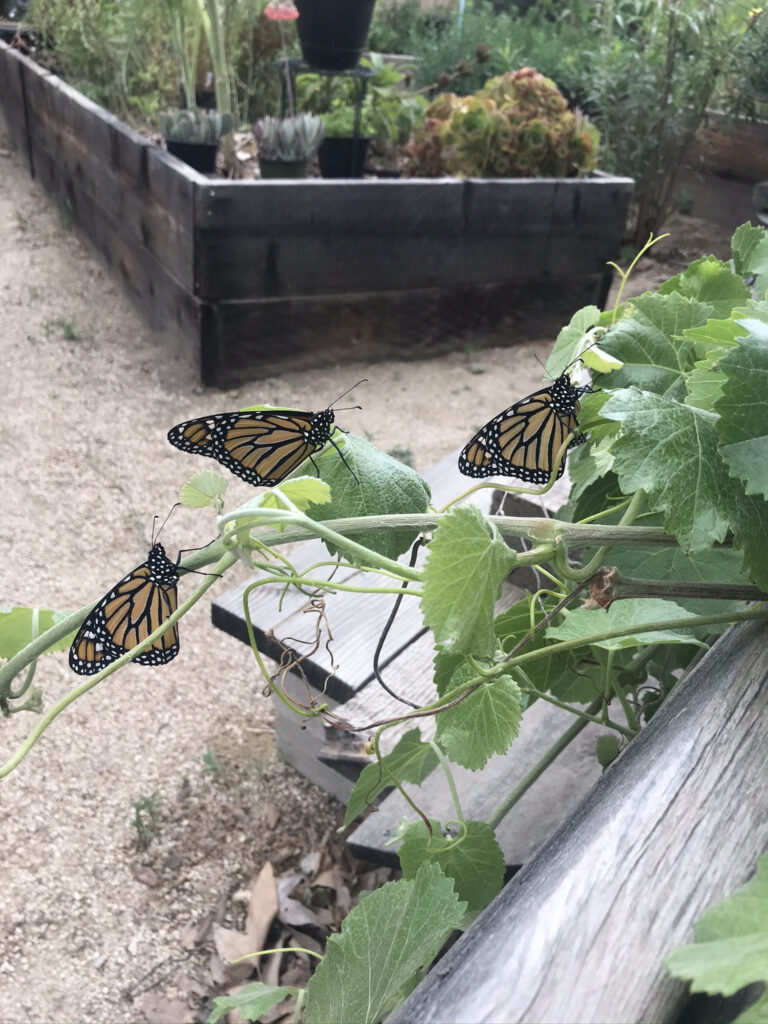News
Wildlife Wednesdays – Monarchs: A Comeback Story!
April 30, 2024

by Mike Heine
The western monarchs (Danaus plexippus plexippus) are currently dispersing inland, seeking out milkweed to lay eggs and complete another generation cycle on their endless migration.
While not genetically distinct from the monarchs that inhabit east of the Rocky Mountains (a natural if somewhat permeable population boundary), western monarchs are unique in that instead of overwintering in the upland forests of central Mexico, they do it right here in California. Each year, one generation of monarchs will hunker down in groves of trees within two miles of the ocean to wait out the worst of the winter until spring when they can set sail once again. They prefer cypresses, pines, and even the invasive eucalyptus tree to shield them from the winds and rains, and the humid ocean air provides a buffer against freezing temperatures and desiccation. These congregations are amazing displays where it seems that the very leaves themselves are replaced by butterflies.
Once this cohort sets off, a three- to four-generational process begins anew. The monarchs fly inland seeking their only host plant, milkweed, to lay their eggs, and then they die. While the larvae only eat milkweeds, adults can feast on a variety of nectar plants to keep their strength up for the journey. This new generation will feed on the milkweed until it’s time for them to set off, repeating the cycle until the autumn generation goes back to the coast to find those groves once again.
In recent years, we have nearly lost this incredible species due to a combination of habitat loss, pesticides, and climate change. Where once the skies were clouded with millions of monarchs in the 1980s, a low of 2,000 adults were recorded in 2020. Fortunately, in 2022 they rebounded to over 300,000, a 22-year high! The current total for 2024 stands at about 233,000, lower than the historic populations but cause for celebration and action to preserve these incredible butterflies for future generations.